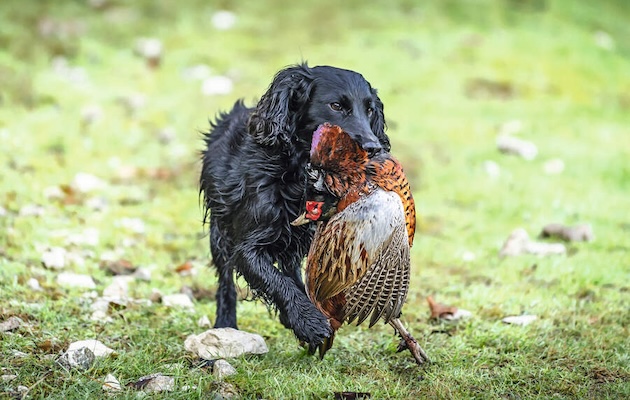Cuts and scrapes are almost inevitable for working dogs but more serious injuries can happen too. In both cases, preparation is key, writes David Tomlinson
Working your gundog in the beating line, or as a picking up dog, is seldom thought of as a high-risk job. Well, it’s not usually for the handler but it can be for the dog. In 40 years of working spaniels I’ve had to make four emergency visits to the vet with an injured animal. In each case the dog survived, though it needed weeks to recover.
Impaled
Three of my emergencies were caused by the dog running into a fallen branch and stabbing itself. On the most serious occasion my bitch had impaled herself by running into a sharp stick that was driven at least 4in into her body, under the ribcage. It didn’t strike any vital organs but she had to be carried to the car and driven at once to the nearest vet. This was in the early days of mobile phones. Fortunately a fellow beater not only had a phone but also knew the number of the nearest vet, who was ready and waiting for us when we arrived.
Having the number of the local practice on your phone is one of the most elementary precautions you can take. If you are working or shooting any distance from home, ask fellow dog handlers or your host for a recommendation; in only one of my four emergencies was I able to use my local vet. With the incident described above, my dog had to spend the night at the practice, which meant a lengthy drive the following day to collect her.

If you are working your dog any distance from home, be sure to have the number of a local vet on your phone
Carry a first aid kit
Carrying a first aid kit in your car is also such a sensible thing that it hardly needs mentioning but it is remarkable how few people do so. You can buy a ready-made kit or make it up yourself (one designed for human use will also suffice for most injuries). The basics to include are strong, soft-rolled bandages; crêpe knit bandages (can be handy for muzzling an injured dog); cotton wool; gauze dressing; a pair of blunt scissors; tweezers and tick removers; a large syringe (useful for flushing saline water into a wound); disinfectant; rubber gloves; kitchen paper; and a safety pin. Of course, sticking plasters won’t work on fur but are useful when bandaging.
Additional items that might well prove useful include a torch, wire cutters (in case of dogs caught on barbed wire) and a blanket or dog coat to wrap the injured animal.

A towel is useful for drying a wet dog but also for wrapping an injured animal to keep it warm and secure
Hypothermia
Once, one of my spaniels collapsed on an exceptionally cold and wet shooting day. She was a fit and healthy dog but had simply run out of energy and was suffering from hypothermia. I had to carry her a mile back to the car, where she was placed in the passenger footwell so that the car’s heater could warm her up, which it did very successfully. Incidentally, it’s worth mentioning that carrying a 20kg spaniel for a mile is a challenge itself, but this was on a shoot where we walked everywhere and there wasn’t a quad bike to call on.
Simple rules
You may have the kit but being able to administer first aid is another matter. There’s a good chance that there might be a fellow beater or dog handler with experience but relying on others in an emergency is dangerous.
While bandaging a wounded dog may sound easy, there are several simple rules that are worth remembering. If dressing a wound, then always cover the injured area with gauze so the bandage doesn’t stick to the wound.
If bandaging a leg, then start from the foot and work upwards, unrolling only small amounts of bandage as you work. Be careful not to bandage so tightly that circulation is restricted.
Beware adders
Always watch your dog or dogs when working them, and note any change in behaviour that might indicate an unseen injury. Adders, for example, are common on grouse moors, and on warm days in August and September there’s a real risk of dogs being bitten unseen. Dogs are remarkably tough, and many will try to continue working even though they have been bitten. Dilated pupils, muscle tremors and sudden lethargy are all indicators of a snake bite. If the dog continues working, then the poison will be pumped round the body, making recovery difficult.
If you suspect a snake bite, call your vet immediately, and try to keep the dog calm and still.
Run over
One of the greatest threats to a dog’s safety in the shooting field is the car, quad bike, Kubota or similar vehicle. Every year dogs are run over on shoots, often because their handler hasn’t anticipated the danger. When around vehicles always keep your dog on a lead, however good it is walking to heel, and be wary of young drivers on quad bikes, as they pose a particularly serious risk. There are numerous canine first aid courses available online. If you are serious about working your dog, then becoming a competent first-aider makes a great deal of sense.





